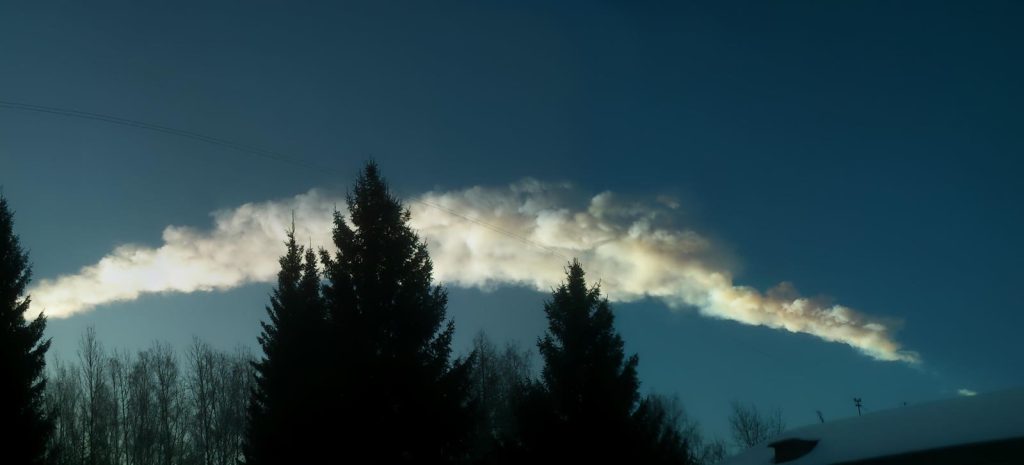Civilization-ending earth impactors continually capture our imaginations. But even a small asteroid that explodes low enough in earth’s atmosphere cause serious damage on a local level.
Until recently astronomers were helpless in getting any sort of advance warning on these smaller meteors streaking through Earth’s atmosphere. But a team at Hungary’s Konkoly Observatory in the hills above Budapest has been running an ongoing survey for such near-earth objects for several years now.
Using a modest 60-cm telescope in Hungary’s Matra mountains coupled with a pair of good old-fashioned human eyes, one Konkoly Observatory astronomer Krisztián Sárneczky has spotted three of the nine known objects identified as such before impacting earth.
Yet the observatory also owes its success in part due to a state-of-the-art camera and software that filters out background noise to focus in on candidate impactors.
This means that the astronomers don’t have to scour any given whole image but only the potential impactors that the software has selected.
Warning times usually range from two to 12 hours. And even a warning of a couple of hours would be enough to alert residents of an incoming impact. This could, in theory, give people time to seek shelter in a basement or the ground-floor of a secure building in the same way that residents in hurricane and tornado-prone areas seek shelter when threatened by meteorological storms.
Any object above one to two meters can be observed.
But anything above 50 meters in diameter could do lots of damage, while on the upper end, a 250-meter object could destroy a large city, Robert Szabo, an observational astronomer and director of Hungary’s Konkoly Observatory in Budapest, told me in his office. However, we would like to see 50 meters to 100-meter sized object as soon as possible, he says.
As for spotting the objects in advance?
There are two factors: size and brightness (or albedo, the fraction of light that is reflected from the surface), says Szabo. All possible combinations happen —- large and dark, large and bright, small and bright, small and dark, he says.
New Moon
Night during a new moon is ideal. But these objects are very faint, moving at thousands of kms a second, so the team typically flags anything they find in their images that is creating a streak.
The apparent brightness depends on these two factors (visible surface times the brightness of unit surface) – and on their distance, says Szabo. But both small and large objects produce streaks on the CCD (charged couple detector). Even so, bright stars, man-made satellites, defects on the camera’s CCD can all cause false alarms (or hide candidates), he says.
Poring Over Images
The eye and the human brain are still very good at spotting these potential impactors in the data, says Szabo. But we are reaching the point when it’s not feasible any more to do this in real time, he says.
Given the fact that 70 percent of earth’s surface is covered by water, more often than not, the impactors that hit land are few and far between.
We are principally looking for Near Earth Objects (NEOs) that come close to the Earth and some of them turn out to be on an imminent impact trajectory, says Szabo. That’s when we can issue a warning, he says.
The software improves the signal to noise ratio so that fainter potential impactors can be found well in advance of hitting earth, says Szabo. But the damage they do depends upon, among other things, their density, composition, porosity, and their velocity of the object, he says.
Even so, these are early days in finding such impactors.
We have a very special location here, so we are ahead of America, and we are after the night in Asia, says Szabo. So, if it’s night in Europe, then we are in the right place and have a chance to see those first, he says.
One of the most recent was found on January 20, 2024. Sárneczky discovered a new asteroid using the 60 cm Schmidt Telescope at Piszkéstető Mountain Station, part of Konkoly Observatory in Hungary, the European Space Agency says.
It struck our planet’s atmosphere 50 km west of Berlin, producing a stunning fireball. Named ‘2024 BX1’, this is just the eighth asteroid that humankind has spotted before impact – and the third discovered by Sárneczky, says ESA.
The goal for the Konkoly Observatory is to expand their number of 60-cm telescopes at Matra mountain to as many as four. This would not only help protect Hungary from potential impactors but all of Europe itself.
Szabo and colleagues are in negotiations about becoming part of ESA’s planetary defense network.
The Bottom Line?
Szabo says finding one of these potential impactors is still like finding a needle in a haystack. But he says this new technology has enabled the observatory to track these small objects to a degree previously not possible.
Read the full article here










